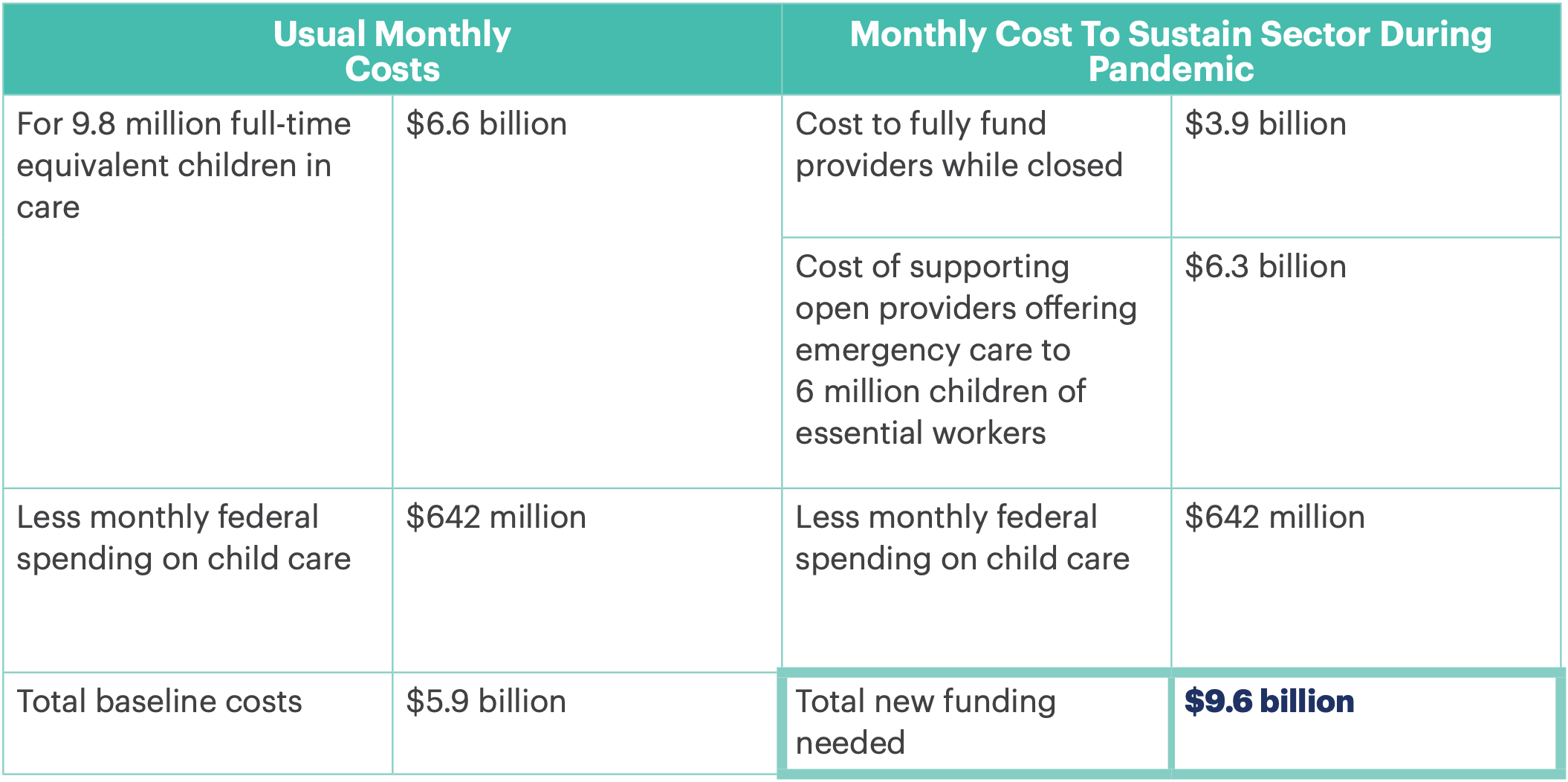Child Care is Key to Our Economic Recovery
This brief provides new estimates of what it would cost to sustain the child care system during the coronavirus pandemic. We estimate that at least $9.6 billion is needed each month to fully fund existing providers in the child care system. These funds would allow closed providers to retain their staff at full pay, be prepared to reopen at the appropriate time, and eliminate cost burdens for families whose providers are closed. These funds will also allow open providers to offer safe, comprehensive emergency care at no cost to an estimated 6 million children of essential workers.
THE CHILD CARE SYSTEM NEEDS AT LEAST $9.6 BILLION MONTHLY TO SURVIVE THE CORONAVIRUS PANDEMIC

Source: Analysis conducted by Ullrich and Sojourner using data from the National Survey of Early Care and Education (NSECE, 2012). Cost estimates are adjusted for price inflation in the child care sector since the data were collected. Figures may not sum due to rounding. A detailed methodology is available in the technical appendix clasp2022.tealmedia.dev/ publications/child-care-key-our-economic-recovery.
Based on our analysis, if Congress appropriates $50 billion in the next coronavirus relief package, the funds would cover the cost of less than 6 months of relief and emergency care. Importantly, this funding would not necessarily be entirely forward-looking, given that providers likely need resources to cover the month or more of lost revenue they’ve already experienced since the crisis began and existing relief funds are insufficient to reach all providers who need support. Given the uncertainty around how the coronavirus pandemic will progress and how long stay-at-home orders will remain in effect, additional funding beyond $50 billion may be necessary just to keep the system afloat.
This analysis is informed by two key assumptions:
- Emergency-care funds target providers within the current system that remain open to supply emergency care at no cost to essential workers, regardless of income. Providers that offer emergency care operate at lower-than-usual capacity but incur additional per-child expenses due to increased staffing costs (including premium pay), new hygiene measures, and higher costs of some supplies. Accordingly, relief funds compensate providers for emergency care at a premium above usual per-child rates.
- Relief funds target child care providers that are facing revenue losses in order to ensure they can resume typical operations as the economy moves towards normal order. Providers that are not offering emergency care are closed, but relief funds cover 100 percent of operating costs on the condition that programs continue to pay their staff at regular wages. Families who normally rely on these providers neither use nor pay for care.
These assumptions guide our analysis and are not meant to capture what is currently happening in states and communities. States could justifiably make different policy choices to meet the unique needs of communities, which would affect the amount of funding needed to keep providers whole and/or provide emergency care.
However, in the face of a steep drop of parent tuition payments, providers that are closed will not be able to make ends meet and may shutter permanently without these investments. This will leave us without a child care system—an essential work support—to return to as we rebound from this crisis. And failure to support providers who are open means that these providers will struggle to operate as an integral part of our public health infrastructure without the necessary resources to provide safe emergency care.
Read the brief and the detailed technical appendix.